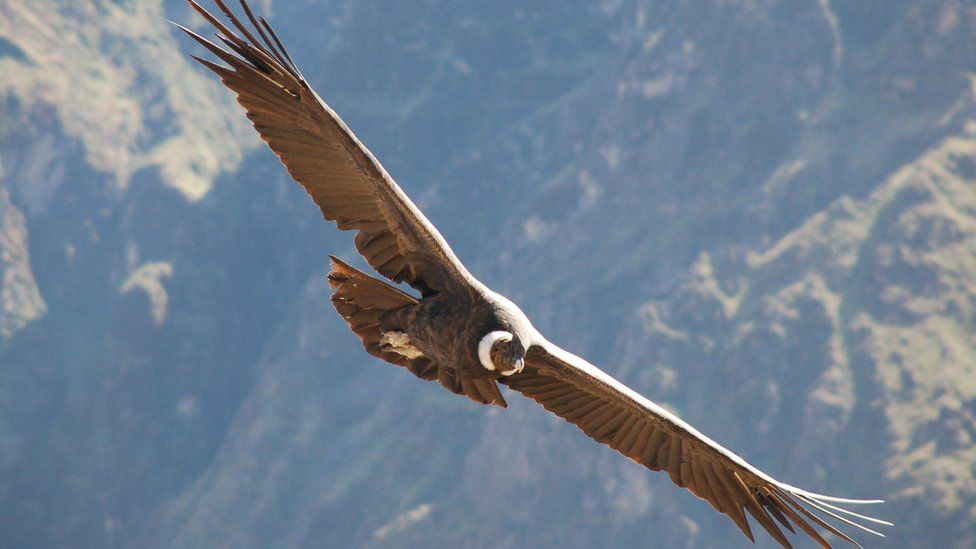Scientists use 2,200 year old bird poo to reveal history of Andean condor
- Published
- comments

You may have heard of how tree rings are used to measure a tree's age, but how about layers of poo being used to find out more about birds?
Scientists have been studying a huge pile of poo high up in the Andes mountain range to reveal more about Andean condors.
By analysing the 2,200 year old bird poo, experts could tell how long the condors had been nesting there and how their diet had changed.
They also showed how nesting slowed down when there was a period of increased volcanic activity in the area.
The poo of condors is not the same as pigeon droppings. Called guano it is a special type of poo which comes from seabirds like cormorants, bats and some land birds like condors.
Guano is used as a fertiliser which makes it a valuable resource.
It also hardens to a solid white substance and there are whole islands made up of mostly guano.
Guano, a type of bird poo which hardens into white solid substance is usually associated with sea birds like these
In 2014, scientists climbed a cliff in Argentina's Nahuel Huapi National Park and under an overhanging rock they found a condor surrounded by a solid doughnut of hundreds of years-worth of guano.
They carefully cut a section out and refilled it with rocks without disturbing the nest.
The guano was taken to their laboratory where using radiocarbon dating, they were able to discover that local condors had been using the nest for around 2200 years.
There were more clues to the condor's past in their poop as shown in the study published in the journal Proceedings of the Royal Society B.
An extinct volcano in Argentina's Nahuel Huapi National Park
In the thousand year period between 300 C.E. and 1300 C.E., the nest's guano build-up dramatically reduced.
The nest is situated in a part of the Andes known for volcanic eruptions and based on geologic records, scientists know there were four volcanic eruptions there around 300 C.E.
They concluded that the eruptions would have caused blankets of ash to cover the vegetation and food that the condors lived on so during this time many moved elsewhere.
When the condors returned, what they ate also changed.
Whereas previously they would have eaten the wild descendants of llamas and beached marine animals, instead they started to prey on domestic animals like sheep and cattle introduced by European settlers in the 1500s.
The researchers plan to collaborate with others to find more condor nests to find out if the same patterns apply.
They say the condors seeming loyalty to one nesting site shows how important it is to protect their roosting sites.
